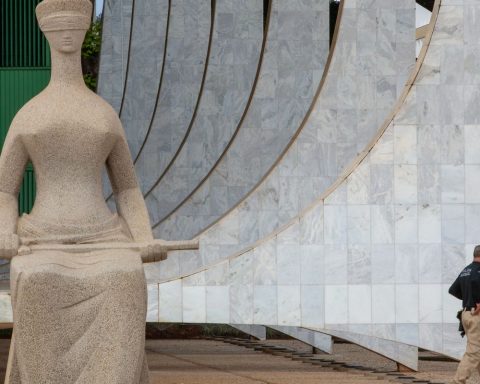October 6, 2022, 19:54 PM
October 6, 2022, 19:54 PM
Scientists have used supercomputer simulations to reveal the origin of the Moon: 4.5 billion years ago, our Moon could have formed immediately after a cataclysmic impact between a Mars-sized object called Theia and Earth – looking very different from today – which ripped off a chunk of our early planet and launched it into space, suggests a new study published in the journal The Astrophysical Journal Letters.
The Moon could have formed in hours
Since the mid-1970s, most theories suggest that the Moon formed from the debris from this collision., merging in orbit over months or years. Now, this new simulation – the most detailed to date – proposes an alternative explanation: the Moon could have formed immediately, in a matter of hours, when material from Earth and Theia was thrown directly into orbit after the impact.
“This opens up a whole new range of possible starting places for the evolution of the Moon,” said Jacob Kegerreis.a postdoctoral researcher at the NASA Ames Research Center and main author of the article.
“We went into this project not knowing exactly what the results of these high-resolution simulations would be. So, in addition to the big reveal that standard resolutions can give the wrong answers, it was even more exciting that the new results could include a tantalizing Moon-like satellite in orbit.”
High resolution impact simulations
In his search for scenarios that could explain the current Earth-Moon system, The researchers simulated hundreds of different impacts at high resolution, varying the angle and speed of the collision, as well as the masses and spins of the two colliding bodies, according to a press release.
According to the researchers, the additional computational power revealed that lower-resolution simulations can miss crucial aspects of large-scale collisions. With high-resolution simulations, researchers can uncover features that weren’t accessible in previous studies.
In fact, only high-resolution simulations produced the Moon-like satellite, and the additional detail revealed how the Moon, in addition to forming in a matter of hours, its outer layers contained more material from Earth.
Elegant response to the visible properties of the moon
The higher resolution simulation also offers a single-stage formation theory that gives a clean answer. and elegant to the Moon’s visible properties, such as its wide, tilted orbit, partially molten interior, and thin crust.
In other words, the researchers discovered that even when a satellite passes so close to Earth expected to be ripped apart by the “tidal forces” of Earth’s gravity, the satellite may actually survive.
However, researchers will have to examine samples of rock and dust excavated from deep within the lunar surface –a goal of future NASA Artemis missions– before he could confirm just how mixed his coat might be.
Understanding our Moon is understanding our planet
Beyond learning more about the Moon, according to NASA in a press release, these studies may bring us closer to understanding how our own Earth became the life-supporting world it is today.
“The more we know about how the Moon formed, The more we will discover about the evolution of our Earth,” says Vincent Eke, a researcher at the University of Durham and co-author of the article. “Their stories are intertwined and could be echoed in the stories of other planets changed by similar or very different collisions,” he concluded. .
Edited by Felipe Espinosa Wang.


















